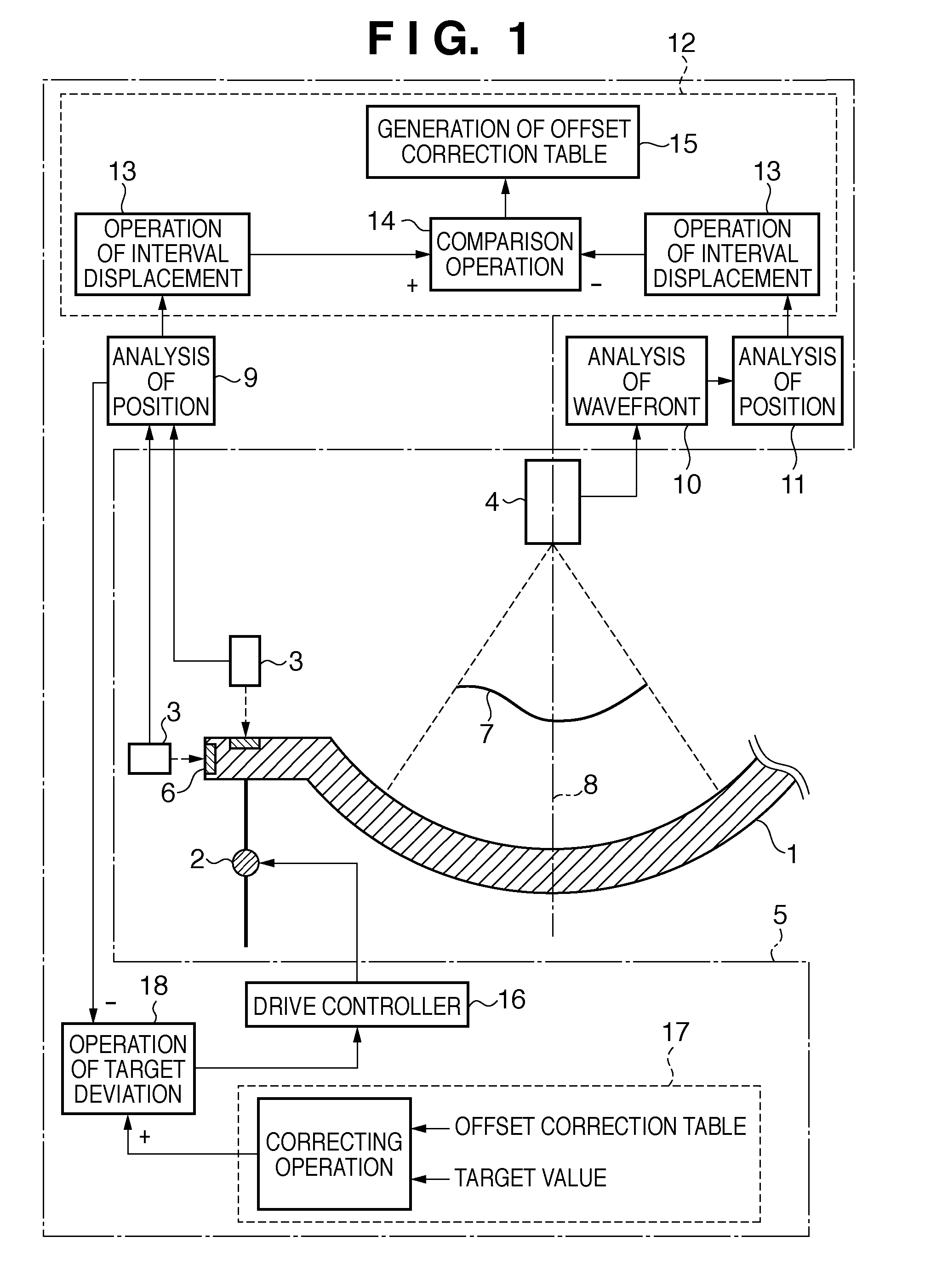Positioning apparatus, positioning method, exposure apparatus, device manufacturing method, and methods of manufacturing positioning apparatus and exposure apparatus
a technology of positioning apparatus and positioning method, which is applied in the direction of measurement devices, instruments, photomechanical treatment, etc., can solve the problems of difficult to correct the displacement of optical elements, change the relative position relationship, and limited movable range, so as to achieve accurate measurement of the position of a measurement portion
- Summary
- Abstract
- Description
- Claims
- Application Information
AI Technical Summary
Benefits of technology
Problems solved by technology
Method used
Image
Examples
first embodiment
[0040]FIG. 1 is a view showing an example of the arrangement of an optical element positioning apparatus according to the first embodiment of the present invention. This positioning apparatus is incorporated into, for example, an exposure apparatus. An exemplary arrangement of the positioning apparatus includes an optical element 1 to be controlled, a driving device 2 for displacing a drive portion, a portion to be driven, or a portion to which a driving force is applied, of the optical element 1, a position measurement device 3 for measuring the position of a measurement portion of the optical element 1, a wavefront measurement device 4 for measuring the wavefront of light guided by the optical element 1, and a controller 5.
[0041]The optical element 1 is, for example, a concave mirror in a projection optical system of an exposure apparatus. The driving device 2 includes an actuator, and can perform positioning for at least one of a total of six degrees of freedom including three de...
second embodiment
[0080]In the first embodiment, the Z-axis direction displacement conversion expression represented by equation (4) used in the position analysis unit 11 contains an error produced by approximation. Examples of the error factor are an error on the surface of projection from the normal line direction to the optical axis direction, and a fitting error in Zernike analysis. Although the former error can be decreased by increasing the density of data, the density of an area sensor must be increased. In this case, the amount of data to be processed becomes enormous, and this very increases the load of processing. Therefore, the former error cannot unlimitedly be reduced. For the latter error, a more complete function is obtained by increasing the order of the Zernike polynomial for fitting, and an error of the obtained coefficient also decreases. However, the processing load naturally becomes enormous, and this makes the method impractical. Therefore, the second embodiment taking account o...
third embodiment
[0084]The third embodiment of the present invention is an embodiment in which a wavefront to be processed by a wavefront analysis unit 10 is the wavefront of the optical axis coordinate system. In this case, the wavefront of the normal line coordinate system can be calculated by performing coordinate conversion on the wavefront of the optical axis coordinate system obtained by wavefront measurement. Also, a position analysis unit 11 can use the same conversion expression as equations (6). Thus, a position measurement device 3 can be accurately calibrated in the same manner as in the second embodiment.
PUM
 Login to View More
Login to View More Abstract
Description
Claims
Application Information
 Login to View More
Login to View More - R&D
- Intellectual Property
- Life Sciences
- Materials
- Tech Scout
- Unparalleled Data Quality
- Higher Quality Content
- 60% Fewer Hallucinations
Browse by: Latest US Patents, China's latest patents, Technical Efficacy Thesaurus, Application Domain, Technology Topic, Popular Technical Reports.
© 2025 PatSnap. All rights reserved.Legal|Privacy policy|Modern Slavery Act Transparency Statement|Sitemap|About US| Contact US: help@patsnap.com



